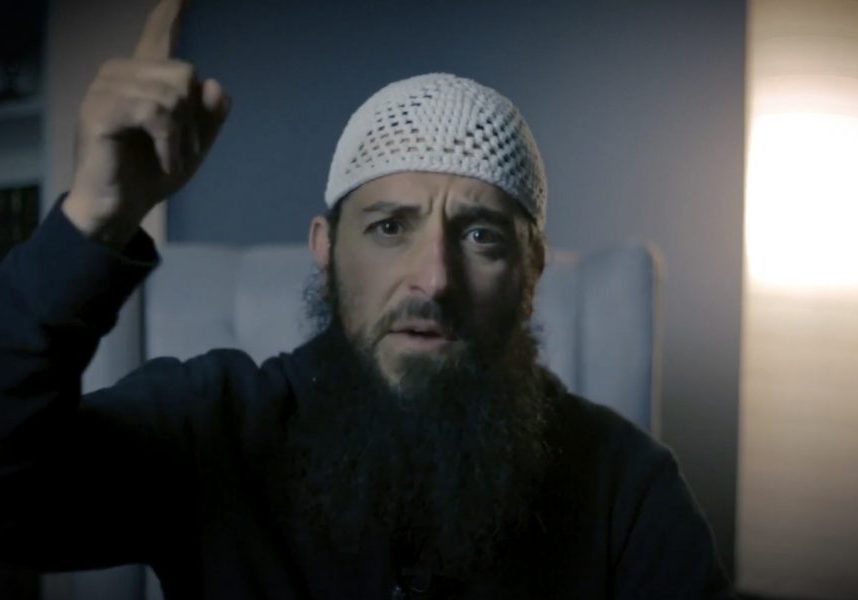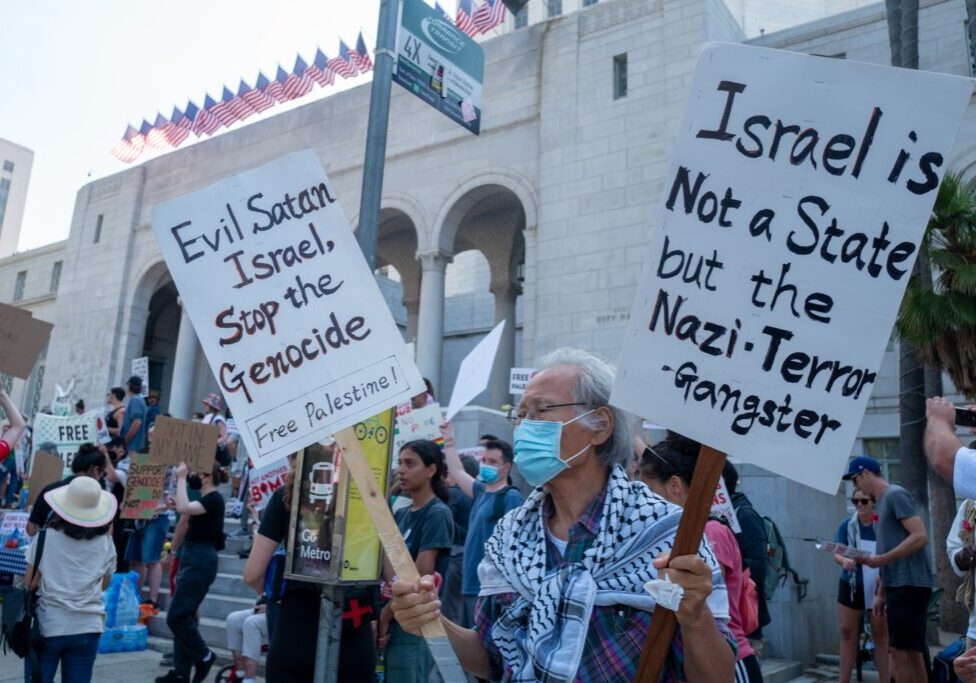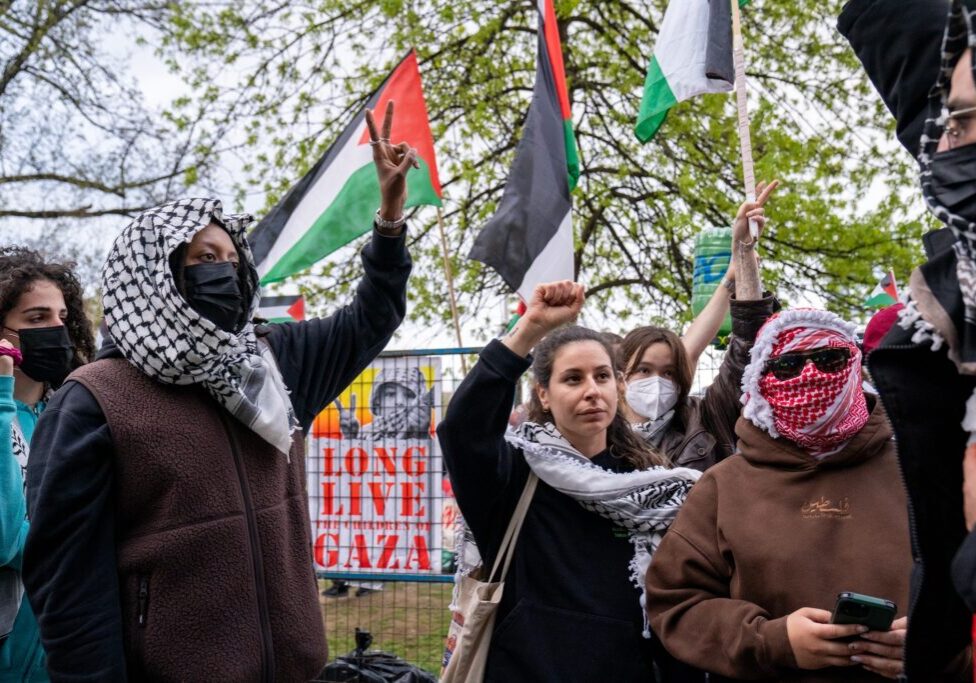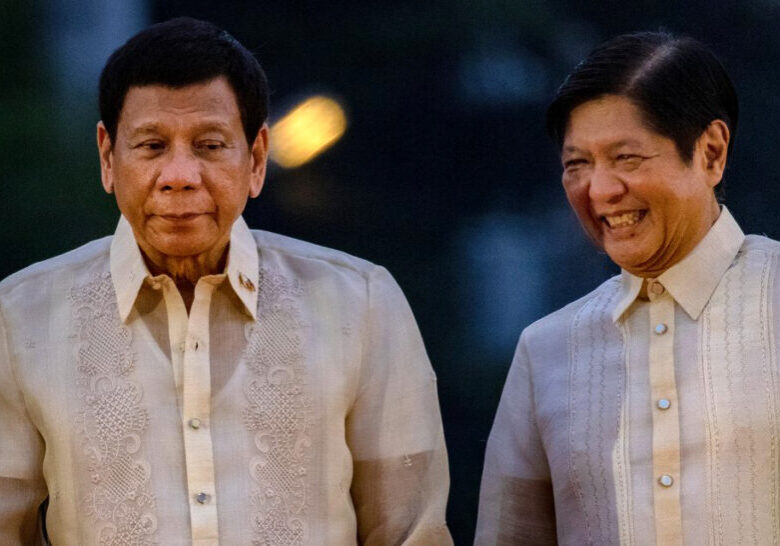Australia/Israel Review
Essay: Terror and Territory
Dec 18, 2015 | Michael Weiss
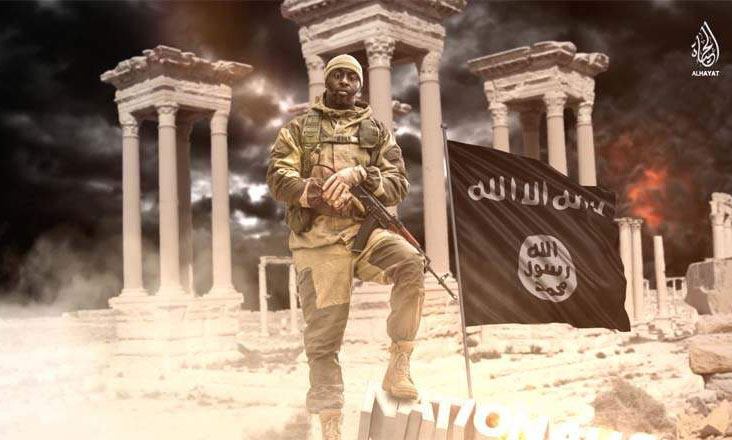
Michael Weiss
The text below is edited transcript of testimony given to the US House Committee on Foreign Affairs on December 2, 2015.
Members of the Committee: I’m honoured and also more than a little depressed to be here today, because the occasion that warrants my testimony is the mass murder of 130 innocent people two weeks ago in one of the most cosmopolitan and well-trafficked cities in the world.
The purpose of this hearing is to determine whether or not ISIS has altered its strategy of late and to weigh any possible US policy responses to the Paris attacks. No doubt an implicit consideration of this discussion is that what has just transpired in France can and will happen in the United States eventually.
I hope I’m not stating the obvious when I point out that ISIS has every intention of doing just that, and it’s largely a matter of luck that it hasn’t been able to already.
Policymakers here and abroad often speak as if ISIS only debuted as a significant insurgency and international terror threat in June 2014, when its soldiers stormed into Iraq’s second-largest city of Mosul, almost uncontested. The President surely forgot himself when, in conversation with the New Yorker‘s David Remnick, he referred to the group that had dispatched mentally-disabled girls in Tal Afar as suicide bombers and blew up the Golden Mosque in Samarra as the “JV team.” But as you well know, this is a jihadist franchise, which with we have grown intimately acquainted for over a decade. It has long memory and is playing an even longer game.
Has it altered its strategy? No, not really, although it has placed greater tactical emphasis on its foreign operations since its capacity for receiving emigrating jihadists from New Jersey to Peshawar has shrunk, thanks to better policing and the relative closure of the Syrian-Turkish border.
Abu Mohammed al-Adnani, officially ISIS’s spokesman but in reality the man in charge of its dominion in Syria, defined the “state’s” foreign policy rather plainly in September: “If you can kill a disbelieving American or European – especially the spiteful and filthy French – or an Australian, or a Canadian, or any other disbeliever from the disbelievers waging war, including the citizens of the countries that entered into a coalition against the Islamic State,” he said, “then rely upon Allah, and kill him in any manner or way however it may be.”
But Adnani was only reiterating what has always been ISIS’s global ambition – to export its holy war well beyond its immediate precincts or purview. The domestic pillar of ISIS’s project is what it calls “remaining and expanding” – the pushing of the borders of the caliphate in the Levant and Mesopotamia and the swelling of the ranks of its fighters and supporters there.
The foreign pillar is the opportunistic spreading of chaos, harm and wanton destruction in the West, relying upon agents who come from the West and who may or may not be returning veterans from a regional battlefield but rather everymen, Muslim or non-Muslim, who have been radicalised remotely. These jihadists are encouraged to strike at the kufar, the unbelievers, on the latter’s home turf or wherever they may be found, using methods both clever and crude: “an explosive device, a bullet, a knife, a car, a rock, or even a boot or a fist,” as al-Adnani elsewhere specified.
The two pillars have been in existence since the era of ISIS’s founder and godfather, the Jordanian jailbird Abu Musab al-Zarqawi. Lest we forget, Zarqawi personally beheaded the American contractor Nicholas Berg in Iraq in 2004; two years before that, he had a direct hand in the assassination of 60-year-old American citizen and USAID worker Laurence Foley in Amman.
Even at the level of terrorist “spectaculars”, Zarqawi never had foreign targets far from his mind. His first two in Iraq, after all, hit within 12 days of each other in 2003, were the Jordanian embassy and the United Nations headquarters, both in Baghdad. In 2004, Zarqawi’s network was found to be planning larger-scale chemical weapons attacks against the US embassy in Amman, the headquarters of Jordan’s General Intelligence Directorate, and the Jordanian Prime Minister’s Office – all of them, thankfully, interdicted by Jordanian authorities.
A year on, though, Jordan wasn’t so lucky. In 2005, al-Qaeda in Iraq-linked suicide bombers blew themselves up at three separate hotels in Amman, killing 60.
In the mid-noughts, Germany’s foreign intelligence arm, the BND, reportedly uncovered a Zarqawist cell operating in the Ruhr region of Germany, responsible for manufacture of fake passports for use in Afghanistan. Agents of that cell were plotting grenade attacks against the Jewish Museum in Berlin.
As it happens, a decade later, a different Jewish Museum – this one in Brussels – was assaulted by one of Zarqawi’s heirs, the 29 year-old French-Algerian Mehdi Nemmouche, who shot and killed three people following his return from Syria, where he’d not only trained with ISIS but also acted a prison guard and particularly zealous torturer of Western hostages.
In the first week of January 2015, a little more than a month after the formation of the anti-ISIS coalition, Amedy Coulibaly, another French national who had earlier pledged allegiance to ISIS leader Abu Bakr al-Baghdadi, shot 16 people in France in the space of two days, five of them dead, including an unarmed policewoman in Montrouge and every Jewish shopper who had the bad luck of being [found by him] at the Hypercacher kosher supermarket at Porte de Vincennes, Paris.
Prior to this attack, Coulibaly had managed to dispatch his wife, Umm Basir al-Muhajirah, to Syria. And not long after Coulibaly and his victims had met their end, Umm Basir told ISIS’s propaganda rag Dabiq: “His eyes shined every time he would watch the videos of the Islamic State. He would say, ‘Don’t show me this,’ because when he would watch the videos, it would make him want to perform hijrah [emigration] immediately and that would have conflicted with his intent to carry out the operations in France.”
On January 15, within days of Coulibaly’s carnage in Paris, Belgium experienced its largest firefight since the close of the Second World War when Belgian police raided a safe house used by three ISIS operatives in the city of Verviers. Two of the operatives were killed in the gun battle, while another was captured. Inside the safe house police discovered large amounts of cash, automatic weapons, fake identification documents, chemical precursors of triacetone triperoxide, or TATP, a high-explosive agent, along with police uniforms and GoPro cameras, suggesting that the terrorists not only planned to pose as law enforcement officials but also exhibit their forthcoming atrocities in Belgium for later distribution by ISIS’s carefully-tended media organs.
It was later established by Brussels that all three ISIS sleepers had been in contact via a cellphone traced to Greece with a 27 year-old Belgian-Moroccan named Abdelhamid Abbaoud. If that name sounds familiar then it’s because he is now said to be the alleged “mastermind” of last month’s Paris attacks.
European intelligence officials have claimed that Abbaoud was no ordinary “lone wolf” but rather a direct operational link between ISIS’s network of sleeper agents in France and Belgium and ISIS’s High Command in Raqqa. He joined the elite al-Battar battalion of ISIS, which formerly consisted exclusively of Libyan fighters but has since been made ethnically and linguistically heterogeneous.
Abbaoud may have also known and directly liaised with al-Baghdadi in coming up with at least the broad contours of his European plots.
Well before the six coordinated suicide bomb and gun attacks in Paris, Abbaoud made his own cameo appearance in Dabiq – in the same issue, in fact, in which Coulibaly’s wife was interviewed – to brag about how easy it was for him to move about in the “land of unbelievers.” Photographed with two other Belgian nationals who had joined ISIS while in Syria, Abbaoud told the magazine that he had serially managed to slip a European security dragnet, even after his photograph had been widely shared in the press. Abbaoud said, “This was nothing but a gift from Allah.”
ISIS has given many other “gifts” in the space of just three months.
On October 10, Ankara suffered its worst terrorist attack in modern Turkish history when two bombs killed over 100 and wounded over 400 more at a Kurdish protest rally outside the city’s central rail terminal.
On October 31, Russia’s Metrojet Flight 9268 broke apart in midair, killing all 224 passengers on board, owing to a small IED – a soda can – planted by an ISIS operative in the aircraft’s fuel lining.
On November 12, a mere day before the Paris attacks, two ISIS suicide bombers blew themselves up in Hezbollah’s Beirut stronghold of Bourj el-Barajneh, killing 43 civilians and wounding 239 in what is now the worst terror atrocity in Lebanon since the end of that country’s devastating civil war in 1990.
ISIS, needless to add, has also been busy beyond its heartland territory in Syria and Iraq, establishing wilayats, or provinces, in Afghanistan, Libya, Yemen, the Sinai, the Caucasus, Nigeria, the Palestinian territories and elsewhere. These largely autonomous fiefs, many of which are administered by different jihadist groups which pledge allegiance to ISIS, may not have the wherewithal to sack and hold terrain as ably as soldiers of the caliphate can, but they are no doubt planning their own terror operations, at home and abroad.
In October, I traveled to Istanbul to interview a defector from ISIS’s internal security service, or amn al-dawleh, one of four main intelligence arms of the caliphate.
My source, whom I’ve called “Abu Khaled,” explained that ISIS’s strength lies not in any special military prowess, whatever the sensationalised portrayal of its advancing tank and Humvee columns or blitzkrieg raids in Deir Ezzor and al-Anbar would have us believe. In fact, Abu Khaled said, ISIS was quite pathetic at conventional warfare. And he would know: he trained many of ISIS’s infantry soldiers who subsequently fought, died or deserted at the Battle of Kobani.
Rather, what distinguished ISIS as an insurgency and terror organisation, he told me, was its “tradecraft”, which allows it to take terrain, and its totalitarian cocktail of patronage and brutality – the phrase he used was “Islamic welfare state” – which allows it to hold terrain. Both assets were clearly an inheritance from the very henchmen of Saddam Hussein’s toppled regime whose military and mukhabarat officers now populate the ranks of ISIS’s decision-making upper cadres and who were themselves, at one point, trained by the Soviet KGB and East German Stasi.
ISIS, in other words, is very good at spying. It infiltrates rival organisations and takes them over from within through persuasion or bribery. Villages, towns, whole cities thus give themselves over to ISIS in advance of any arriving shock troops. And, Abu Khaled added, this talent for clandestine cultivation and recruitment is highly exportable.
In additional to cannon fodder for Kobani, Abu Khaled trained foreign expeditionary forces, those sent “behind enemy lines,” be these in Syria and Iraq or overseas. He remembered two French nationals he met and trained in the Aleppo suburb of al-Bab. After the Paris attacks, he was convinced that one or both of them had been involved in the carnage.
So what makes ISIS a going concern after a year of attritional air war, the loss of (maybe) 20,000 ISIS fighters, and a worldwide campaign of vilification and exposure waged by every government committed to destroying the army of terror?
For one thing, ISIS is still hugely successful as a regional guerrilla insurgency, much less a global terrorist organisation. It occupies an expanse of territory which it describes as larger than Great Britain, eight times the size of Belgium and 30 times the size of Qatar. It currently holds three provincial capitals in the Middle East. And though it has lost territory in Syria and Iraq in the last year, it is still very much entrenched all along the strategic Euphrates River Valley. It’s incredibly rich, and makes the bulk of its money not through oil sales or artifact smuggling (although it makes plenty of money that way, too) but primarily through its petty-bureaucratic system of fines and levies, which it imposes on those it “governs”. These aren’t just the sharia equivalent of parking tickets. ISIS wages unforgiving forms of repossession and eminent domain. Anyone deemed an enemy of ISIS or deserter from the “Land of Belief” will have his property and assets seized. (This is yet another reason why it wants territory and people: to generate revenue.)
What ISIS lacks in manpower or martial acumen, it makes up for in bravado. As I speak, ISIS has a mere 300 to 400 militants holding one of the aforementioned three provincial capitals, Ramadi. They are facing off against 10,000 pro-Iraqi government forces preparing to retake the city, on the back of US air power.
Those who rightly loathe ISIS can’t help but be impressed by this enemy’s ability to do so much with so little. Moreover, unlike Kobani or Sinjar, where Sunni Arabs were the minority population, Ramadi is ISIS’s briar patch: quite comfortable for them to hide in, but very painful for others not accustomed to invading. Where ISIS has been expelled from more naturally favourable geography, such as Tikrit, many inhabitants have mistaken liberation – coming largely at the hands of Iranian-backed Shi’ite militias – for conquest. Human Rights Watch and Amnesty International have documented acts of retributive violence by these militias (some of which are US-designated terror organisations responsible for the killing of American soldiers in Iraq), such as looting, ethnic cleansing, the burning down of houses, summary executions and torture.
Also, ISIS’s propaganda is impressive by any objective measure. Its latest video, titled “And No Respite,” released on November 24, resembles a cross between the trailer for a highly anticipated multiplayer video game and a demoniacal US Army recruitment video. In existential “us v. them” fashion, it preys upon our awkward societal vulnerabilities, such as American racial tension (the caliphate is colour-blind, you see), and contrasts their brave and willing martyrs on the battlefield with the high suicide rate among veterans of the US armed forces, which, the ISIS narrator assures us in his voiceover-fluent Hollywood English, are “still scarred from their defeats in Iraq and Afghanistan.”
Finally, “And No Respite” also utilises US hypocrisy and falsehood in the war against ISIS, such as the reports that Defence Intelligence Agency officials have been cooking intelligence to give a rosier appraisal on the coalition’s progress than the facts merit. (ISIS has long maintained that the West’s depiction of ISIS is a mountain of lies; which is why “hear from us, not about us,” is a mantra of its agitprop and an engine of its social media outreach.)
And here I come to the main reason that ISIS’s recruitment drive remains undiminished and its reach beyond the borders of its self-declared “state” ever-growing. Its ability to proselytise and brainwash has been made all the easier by what many non-jihadists and non-Islamists today perceive of as a legitimation of ISIS’s grand, paranoid narrative of caliphate contra mundum. (“Caliphate against the world”). For ISIS hasn’t just an apocalyptic religious ambition, it has temporal political one. And the US is unwittingly furthering the latter.
ISIS presents itself as the sole custodian and defender of Sunni Islam, practitioners of which, it argues, have been systematically targeted for murder, dispossession and disinheritance since the 2003 invasion of Iraq, when a Sunni-minority regime led by Saddam was toppled and a Shi’ite-majority government came to power through democratic vote. At first, the jihadists believed, the US blundered into Iraq and accidentally handed the country over to Iran and its hireling militias, such as the Badr Corps, a notable bugbear of Zarqawi. But now the jihadists aren’t so sure it was an accident after all…
According to ISIS, there’s a new coalition of the willing and it is led by the United States and Russia, abetted by the Shi’ites of Iran and Iraq, the “tyrannical” regime of the Arab world. Anyone who has recently spent time in the Middle East will note that however imaginative or feverish this assessment of 21st-century geopolitics may seem, much of it appears persuasive, compelling and ever more empirically verifiable to the very people upon whom ISIS relies to maintain its totalitarian order, and upon whom we will ultimately rely to defeat ISIS: Sunni Arabs.
Even the ablest State Department emissary will find it increasingly difficult to explain to the ordinary Syrian victimised by Damascus where terrorist conspiracy theory ends and actual US foreign policy begins.
Why else, after all, do American warplanes and drones bomb only Sunni extremists but not those extremists loyal to Bashar al-Assad, who have burnt people alive, and ethnically cleansed villages, and disappeared tens of thousands in dungeons, and displaced millions either internally or externally, and killed hundreds of thousands using every weapon in his arsenal, including sarin gas and the specially devised “barrel bomb”? And that’s when al-Assad isn’t buying oil from ISIS. Why, anyone travelling to Sunni communities in the region will hear, is the US not just acquiescing to the military campaigns of Hezbollah and Iran’s Revolutionary Guards Corps-Quds Force in Syria but actually providing both with close air support in Iraq? And why, it’s been asked in the last two months, has the US allowed Russia to install its own no-fly zone in Syria, not for the purpose of bombing ISIS, as Vladimir Putin falsely claims (and as ISIS mockingly disclaims in its most recent issue of Dabiq), but for protecting al-Assad and eliminating any credible rebel challenge to his regime, including those US-backed Free Syrian Army brigades and battalions that have fought and beaten ISIS?
Al-Baghdadi listens to these laments by Sunni Arabs and rubs his hands with glee.
Michael Weiss is a Senior Editor at The Daily Beast and co-author of the New York Times bestseller ISIS: Inside the Army of Terror.
Tags: Islamic Extremism

